Last Updated on June 15, 2025 by Maged kamel
A Solved problem 4-2 for shear Lag factor U for a welded connection.
We continue together with the shear lag factor; how do we evaluate it? We will look at the solved problem-4-2, from Abi Aghayre, from the structural steel design version-3; the solved problem concerns the weld for one leg of an angle.

Next are the cases for tensile yielding and tensile Ruptures and how we get the LRFD and ASD tensile design strength.

This is the Grade of steel and the corresponding Fy, Fult values for A36, fy=36 ksi, fult=58-80 ksi, A572 grade,fy=50 ksi, A572 grade, the value of tensile point=65 ksi.

These are the tables as per the latest revision of AISC-360-16, which we are using to estimate the values of the shear lag factor U, In the first table for plates, the three cases of the plates were explained.
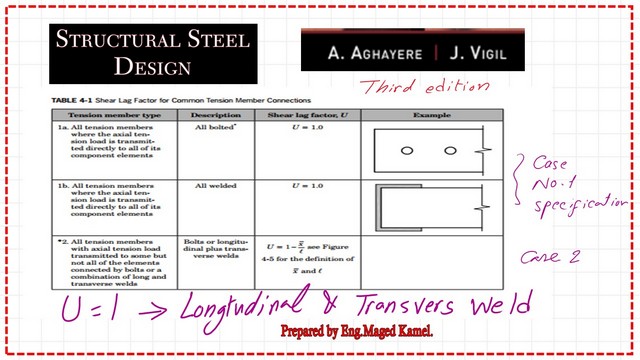
Case No. 3 is the case of any tension member welded to another element by a transverse weld, for which the U value is 1.00.
Case No.4a: In this case, plate, angle, C channel, and angle are welded in the longitudinal direction only with tension to another element, for which an equation gives the U value to estimate the U value.
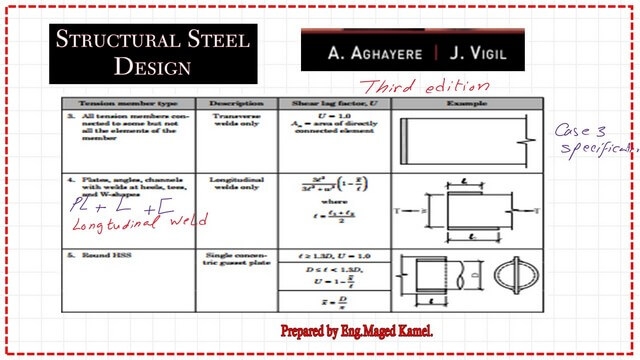
These are the various cases of rectangular connections to a single plate or two plates and the corresponding values for each case.

The next slide image shows the U value for the case of a rectangular HSS in the case of a connection to a single gusset plate and in the case of a connection to two gusset plates.
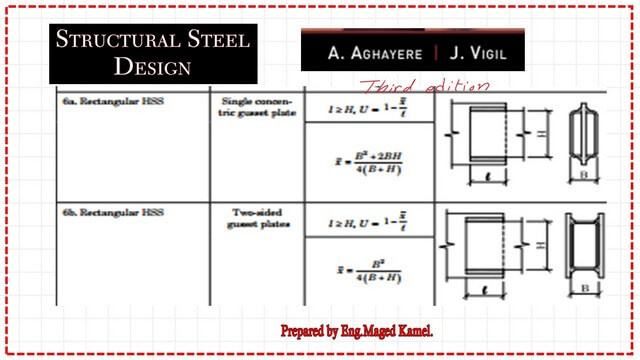
Cases 7 and 8 for W section and angles with different types of connections and their U values.
How do we estimate the weld length in the case of unequal weld lengths?
On page 53 from Prof. Segui’s book, if you have a Tension member that is welded in one leg with a plate in the vertical direction as shown as well as welded at the longitudinal top and bottom edges for the other leg, whether it has an equal weld distance for both upper and lower portion or with a different top and bottom sides distances for which L1 is the weld length for the upper part of the leg with the plate and L 2 is the length of the weld for the lower portion of the leg.
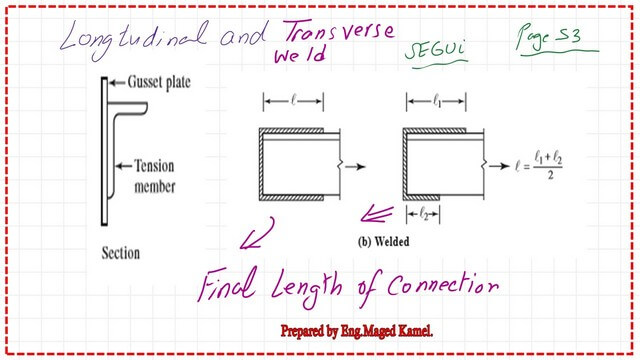
From commentary 16-1, page 303, for a welded connection, L is the length of the weld parallel to the line of force. Here, as shown, the different weld lengths are in the direction of the force. In Fig CD-3.4 for longitudinal and longitudinal plus transverse welds, L is the length parallel to the force.
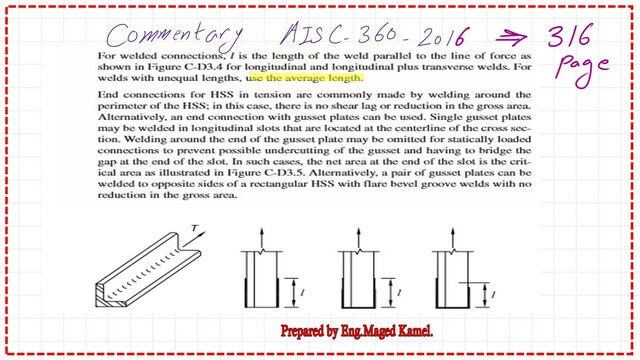
In the case of different lengths, use the average size, which is now our concern for the next solved problem 4-2 for shear lag.
The Solved problem 4-2 for shear Lag factor U.
Evaluate the U value for welded connection angle L 5x5x3/8 on three sides. Since one leg is not connected, the U value is less than 1. The lower weld length is 4″, and the upper portion weld length is 6 “. The upper leg is welded at the edge with a length equal to the angle height. It is not connected to the backplate.
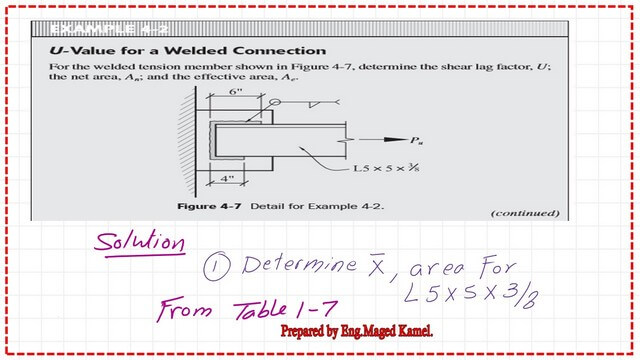
The steps to be followed are first to determine the x̅ and the area of the angle. We have an angle of 5x5x3/8″, for which the area is =3.65 inch2. he x̅, which is y̅ value from the table=1.37″
The length of connection L is taken as the average length of the weld for the upper weld length =6″ and the length of the lower weld=4″.
L=0.50*(4+6)=5″. The U value equals(1- x̅/L=(1-1.37/5)=0.726.The net area equals the gross area since no bolts are used. The effective area is (0.726*3.65)=2.65 inch2.
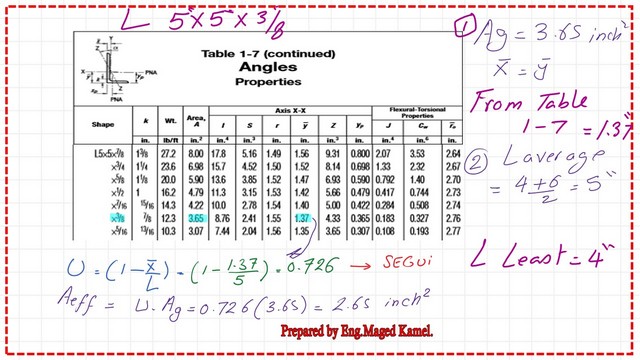
The following post will contain two solved problems for the effective net area.
Chapter 3 – Tension Members– A Beginner’s Guide to Structural Engineering is a great external resource.